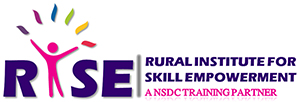At the end of the program, the learner will be able to
Basic concepts of IoT and its use cases.
- List common security and privacy risks that affect IoT solutions and methods that mitigate them.
- Explain product engineering concepts such as how to translate requirements into products and ensuring their timely delivery.
- List development tools, frameworks, platforms, libraries, and packages to test hardware and software systems.
- Develop and maintain software across the end-to-end IoT technology stack. Develop and test source code for software applications.
- Explain the different phases of a continuous integration and deployment (CI/CD) pipeline such as build, unit test, deploy, auto test, deploy to production, etc.
- List different tools for build and test automation such as Puppet, Chef, Jenkins, SaltStack, Selenium, etc.
- Apply the concepts of containerization using tools such as Docker, Kubernetes, Nagios, etc.
- List different tools for configuration management such as Puppet, Chef, Ansible, etc.
- Describe the various stages of Systems Engineering and perform the tasks involved in each of them.
- Create various types of technical documents.
- Apply the principles of persuasive communication for negotiations and discussions.
- Apply different approaches to build rapport and collaborate with stakeholders.
- Employ best practices to maintain an inclusive and environmentally sustainable workplace


